I logged into my results at AncestryDNA today, and I had new fourth cousin match: Vivian Reese Wescott (ALL names in these screenshots are changed to protect privacy unless noted otherwise). This is a significant match to me, my 22nd closest match (not counting family members that I’ve tested). The relationship is estimated to be fourth cousin.
When I open up Vivian’s profile, I can see that she’s a new member, and likely hasn’t seen her results yet (I check frequently, but she hasn’t logged in since September 23rd). I also see that she doesn’t have a tree associated with her profile:
The first thing I would normally do is review her tree for clues as to our relationship.
Since I can’t do that, I’ll skip that step and now I’ll look to see how much DNA we share in common:
So we share 75 cM. According to the Shared cM Project, that is within the 3C to 4C range (you can use the cool new DNAPainter tool here to highlight the possible relationships containing 75 cM within the relationship range: https://dnapainter.com/tools/sharedcm/75).
Next I’ll look at Vivian’s ethnicity prediction. I won’t ever put too much weight on this, but I do see some interesting information. The third highest percentage is Native American, and there’s a trace Iberian Peninsula. Hmmm. I’m starting to form a hypothesis (more on that below).
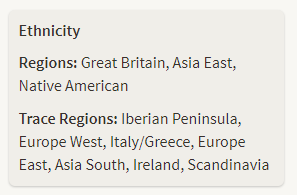
Next I reviewed Vivian’s user member page (by clicking her name), but there’s nothing of interest there. Sometimes there are forum post links, other family trees, or other valuable information. But I’m striking out on this one.
Now I’ll turn to my most powerful tool, Shared Matches. When I click on the Shared Matches tab, I get some very valuable information. I see that this is a maternal match, since she shares my mother in common (and not my father):
You certainly don’t have to have a parent tested to use the Shared Matches feature! Let’s say I don’t have my mother tested, and we’ll examine some of my other Shared Matches:
Now I have some really great information. If I know how any of Gold23, Brainard Garcia, Janice Strong, or T.Y. are related to me, I can HYPOTHESIZE that Vivian is related to me along the same line. It’s just a hypothesis, of course, but without this hypothesis I don’t have much to go on.
Sure enough, I know how Gold23 and Brainard Garcia are related to me; on my maternal grandmother’s line. In fact, “Garcia” is my maternal grandmother’s maiden name. And, my maternal grandmother’s line has Native American and Iberian Peninsula ancestry (hence the clue above when we talked about the ethnicity report). So now I will hypothesize that Vivian is related to me through my maternal grandmother. It’s only a hypothesis, but now I can proceed with that hypothesis in mind and collect information to try to disprove that hypothesis.
So what’s next? Now I can contact Vivian and I can ask if she’s willing to share information, providing her with information about my tree. I’ll also send her information about the line I believe we share. In my experience, if you contact a match with surnames they’re likely to recognize, you will significantly increase the response rate. And who doesn’t love an increased response rate??
Oh, and my final step? Make a note using whatever process you have in place!

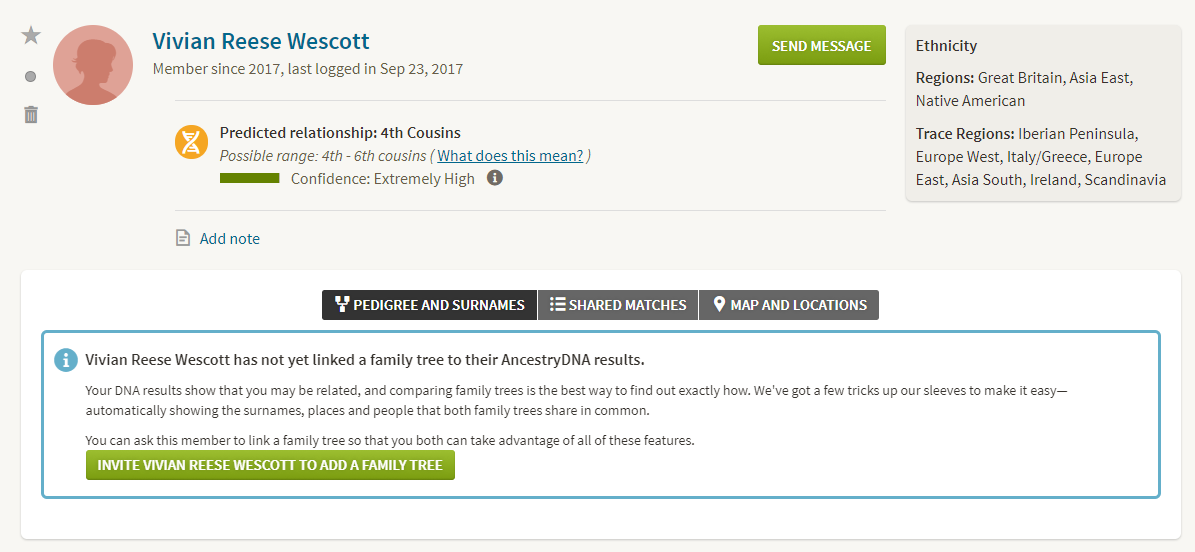
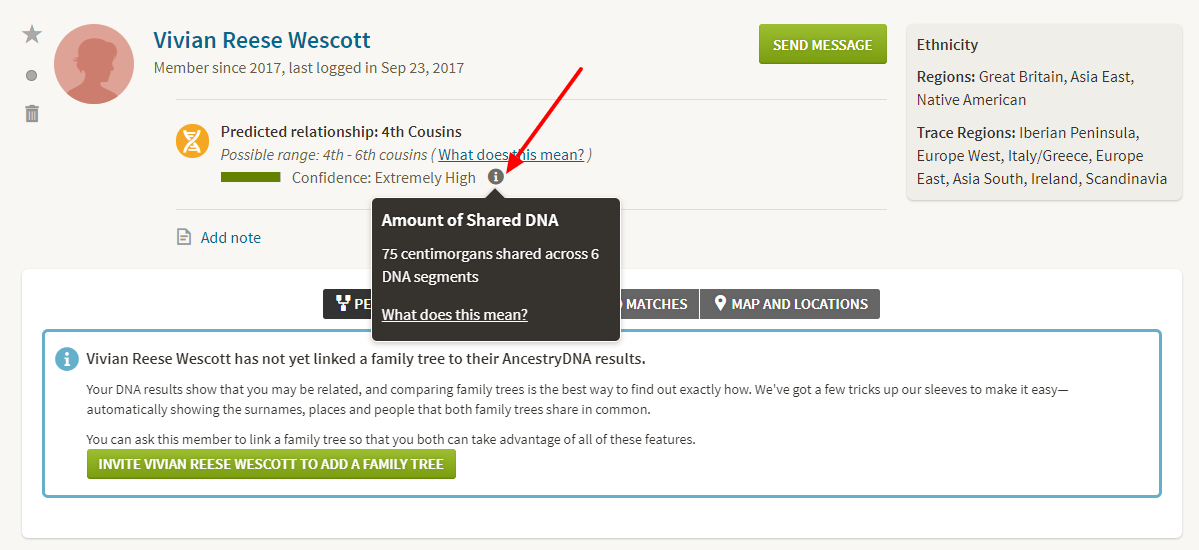
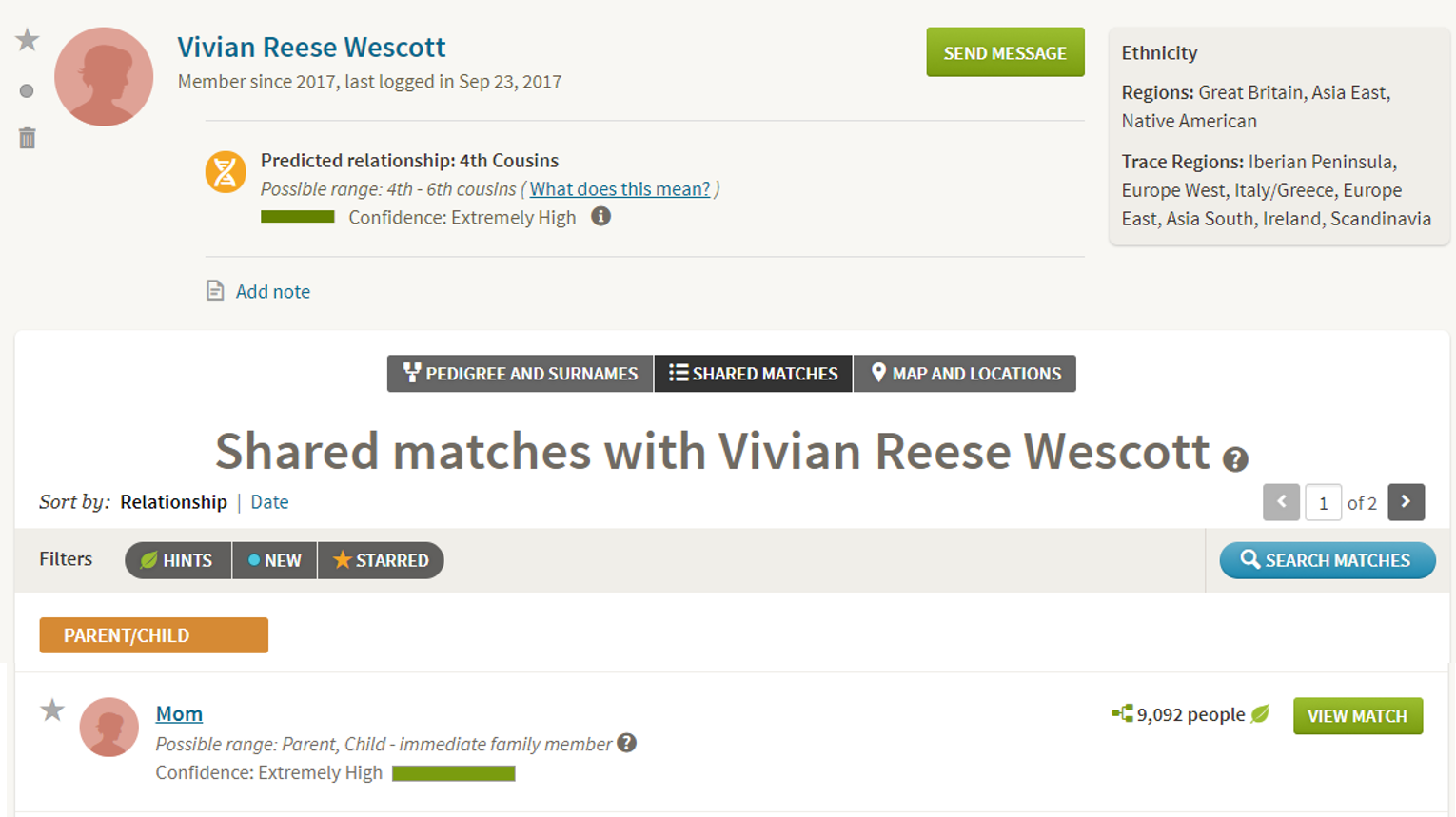
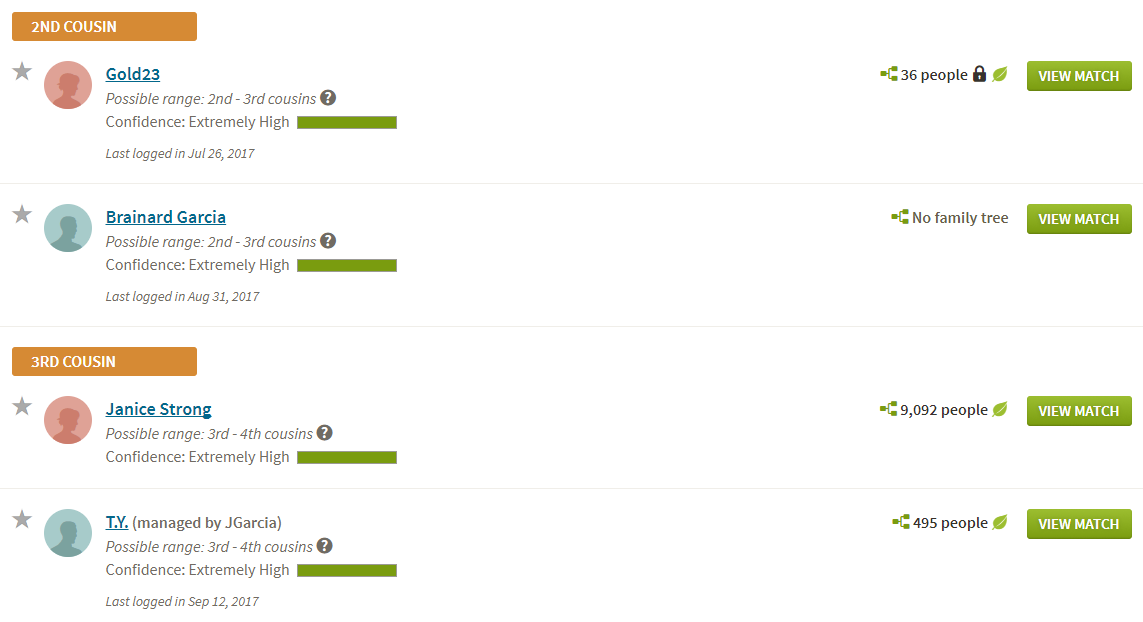
Glad to know that my TTP (technique, tactic and procedure) for evaluating new matches is right in line with what you do! Keeping track of known matches so that the match will help me evaluate future new matches is the hard part. I note the family lines or lineage on the match as well as try to enter that info into a spreadsheet…or try to do so but that takes time…ugh!
Hi Blaine – right on the nose as usual. I routinely do this with my new, no-tree and locked matches at Ancestry. But I also list the cMs/segments and possible relationship right in the notes window below the name, in addition to several of their shared matches with me. That way if I find others showing this shared match I don’t have to redo everything.
Bye for now,
This is so informative and exciting.. I have at least 10 matches on one chromosome on the same segment and I don’t know how they are connected to me. One of those matches is on Ancestry so as soon as we get a known shared match I will be able to narrow my search down.. Waiting, waiting for other distant cousins with great trees to test..
As an intermediate researcher, I use this technique as well – great to know I’m doing the same thing as more advanced people.
It is a bit disappointing with ancestry that it only reports 6 matching segments [ in this example ] and doesn’t specify which chromosomes they are.
Oh what a lucky new cuz you have !!! I hope they realise how lucky they are and take all the advice they can get – it is very disappointing when people test, then completely disregard much of the free help offered to them.
This article is excellent advice for newbys.
You are so kind and intuitive. Thank you. Sheila
My next step would be Googling “Vivian Reese Wescott”, “Vivian Reese”, and “Vivian Wescott” to see if her name popped up in an obituary, news story, or some other that would give a clue as to the family connection.
Can you talk about the significance of segment size? I have a few unknown matches of over 70 total CM’s and have used your tool: https://dnapainter.com/tools/sharedcm
but one of these that is unknown (with extensive tree work) has a single segment of 70 cm’s. Does this mean the match is closer? and if so, how close?
dm
Thank you for information on using shared matches. I have been trying to explain this technique to a group of new researchers for a while and since I wasn’t really sure how I did it, could never put the method in to simple words, your article is greatly appreciated.
I just received my hubby’s results and I decided to attempt to categorize all the matches in this fashion:
1A hubby paternal line – father
1B hubby paternal line – mother
2A hubby maternal line – father
2B hubby maternal – mother
He had 3 first cousin matches, all of whom were paternal; so they are 1A and 1B.
Then on the second cousin matches, I was able to tell through shared matches (3 of the matches were already known to me) and was able to categorize them as 1B or 2A or 2B all the way out to fourth cousin fairly easily. The problem was there were absolutely no matches on the 1A line. And of course that is the line that is a mystery. My husband’s paternal grandfather was born in Germany to an unwed mother. When he was a few years old, he emigrated to the US with his mother. I was hoping there would be a match that might help with this. In addition the ethnic results were a surprise. Despite the fact that 12 of the sixteen gg grandparents were born in Germany, his top three ethnicities were Scandinavian 25%, Eastern Eurpean and Southern European where do I go from here?
What about the explanation for the telepathy of people who are related by blood, such as mother and child or father and son.